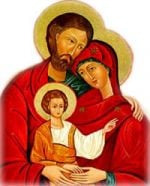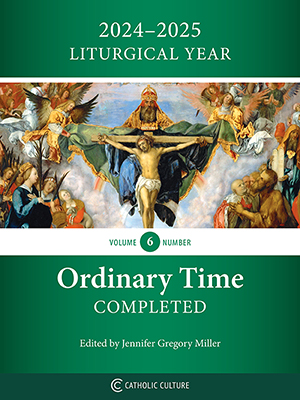Facts—and fictions—about the papal interregnum
By Phil Lawler ( bio - articles - email ) | Apr 22, 2025
In March, as it became clear that Pope Francis was in declining health, I posted a short primer on “What to do when the conclave comes”—a guide for Catholics (and others) following the preparations for a papal election. Readers may find it helpful to look over that piece now. But since the conclave is still two weeks away, I thought I might offer some similar guidance on how to understand the sede vacante period: the days, or weeks, when there is no Pope.
Is Cardinal Farrell the acting head of the universal Church during the interregnum?
No. Cardinal Kevin Farrell—an Irish-born prelate who spent most of his priestly ministry in the US, including a stint as Bishop of Dallas—was named by Pope Francis to serve in several important positions of trust, among them the post of camerlengo. The camerlengo’s role becomes prominent when the Pope dies, and ceases to attract notice when a new Pontiff is elected.
The camerlengo handles the temporal affairs of the Holy See during a papal interregnum. He does not temporarily hold the authority of the Roman Pontiff. If a decision requires papal approval, that decision waits for the new Pope. But someone has to manage the day-to-day functioning of the Vatican, and that job falls to the camerlengo.
The task of the camerlengo is eased by two factors. First, the College of Cardinals chooses three prelates to assist him with the daily administrative tasks. (Those three cardinals have already been selected.) Second, the offices of the Roman Curia work on a slower schedule during the interregnum, since all important policy decisions are postponed. In fact, the leaders of the Roman Curia—the prefects of the various dicasteries—vacate their offices when the Pope dies. Since they serve at the pleasure of the Pontiff, they will be either confirmed or replaced when the new Pope takes office.
So who’s really in charge of the Church?
The camerlengo handles temporal affairs. Insofar as there are pastoral questions to be settled, they are discussed by the College of Cardinals, whose members begin meeting in “congregations” each day after a Pope’s death. But again, if a decision requires the approval of the Roman Pontiff, that decision is deferred.
The first congregation was held on Tuesday, April 22—the day after Pope Francis died—and attended by the cardinals who were already in Rome. Attendance at these daily sessions will increase steadily as cardinals arrive from all around the world.
The congregations are open to all cardinals, including those who, being over the age of 80, are no longer eligible to vote in a conclave. These daily discussions give the cardinals an opportunity to learn from each other, to exchange ideas about the needs of the universal Church, and thus to form their ideas about the papabili, the potential candidates for the papacy.
When will the conclave begin?
The rule is that the conclave should open between 15 and 20 days after the announcement of the Pope’s death. In this case, then, sometime during the first week of May. The cardinals will set a date during their congregations.
How long with the conclave take? When will the new Pope be elected?
No one knows. There is no set date, no “election day.” The cardinals will begin voting, with two ballots scheduled for the first afternoon of the conclave, and four ballots—two in the morning, two in the afternoon—each day thereafter. The proceedings are secret, and the conclave is closed, so during those days there will be no progress reports. The only “news” will be the appearance of black or white smoke from the chimney above the Sistine Chapel.
Although the results of a conclave are always unpredictable—and most informed observers agree that this conclave will be even more unpredictable, because so many cardinals are unknown to each other—it seems safe to assume that a new Pope will be elected within a few days. There are no guarantees, but it would be reasonable to expect that the 267th Roman Pontiff will be named by May 10.
Will the new Pope be chosen from among the cardinals in the conclave?
Almost certainly, but not necessarily. In principle any baptized male is eligible. In practice, during the past 500 years, only cardinals have been elected.
In theory the cardinals could choose someone who is not present in the Sistine Chapel. But until the newly elected Pope formally accepts the office, the work of the conclave is not done. So it is possible—albeit highly unlikely—that the cardinals could suspend their voting, summon their chosen candidate, and let the Catholic world wait in suspense while that candidate was rushed secretly into the Sistine Chapel. And then the cardinals would have to wait upon the candidate’s response—and, if he declined, go back to work.
If you are inclined to write suspense novels, I’ve just given you your opening scene. But if you’re more interested in the actual work of the conclave, you can safely dismiss that scenario.
All comments are moderated. To lighten our editing burden, only current donors are allowed to Sound Off. If you are a current donor, log in to see the comment form; otherwise please support our work, and Sound Off!
-
Posted by: chapman18668 -
Apr. 24, 2025 9:05 AM ET USA
I have heard more than a few suggest Bishop Erik Varden as a candidate. He could fulfill that last scenario! I seriously doubt that will happen, but I do hope he is named a Cardinal by this next Pope and that could place him in a more serious position for a future conclave...
-
Posted by: ewaughok -
Apr. 23, 2025 2:42 AM ET USA
Oh Mr Lawler! I thought you were going to give us some spine-tingling thriller along the lines of a recent Hollywood fantasy about Cardinals electioneering, leading to the big reveal: biological “sports” (to use a term of medical art). Instead, you gave us the plain vanilla truth. Killjoy!








